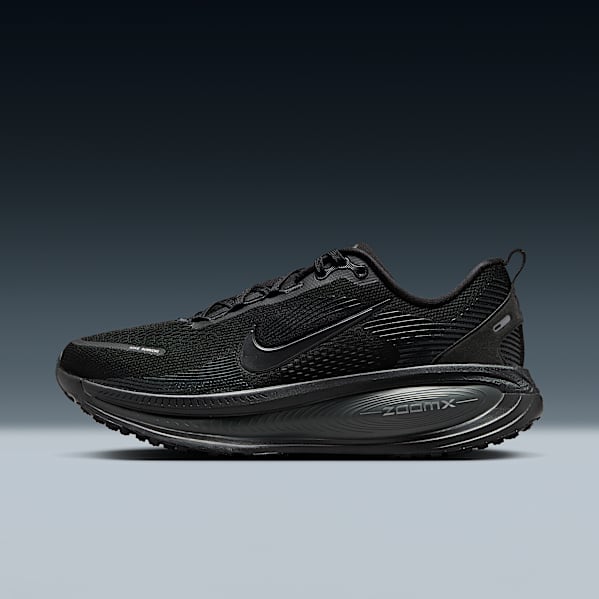What should my average heart rate be while running?
Activity
It depends on many factors, say exercise physiologists. Learn more, here.

You may not notice your heart beat until it feels like it's pounding through your chest. But, identifying your average heart rate while running is paramount to your success as an athlete.
"Tracking your heart rate when training can give you a sense of how hard you're working and how quickly your body is recovering during breaks and rest periods", says exercise physiologist Jason Machowsky, RD, CSSD, CEP, CSCS. "It can also help you determine where your body transitions from aerobic to anaerobic training".
Get started with this handy guide to figuring out your normal heart rate when running.
Factors that impact heart rate when running
In general, there are a few things that will establish what a "normal heart rate" looks like for you, including:
- Age
- Weight
- Aerobic capacity/fitness level
- Family history
During exercise, running quickly and covering hilly routes will automatically boost your heart rate. But several other factors can increase your heart rate, including:
- Stress and anxiety
- Other medical conditions
- Certain medications
- Higher temperature and humidity
- Caffeine, alcohol or nicotine
Your maximum heart rate
The easiest way to calculate your maximum heart rate is to subtract your age from 220. That means, if you're 40 years old, your predicted maximum heart rate is 180 beats per minute (bpm).
"However, this should be used with caution because heart rate can vary widely between individuals", says exercise physiologist Todd Buckingham, PhD. "This might be what an average 40-year-old maximum heart rate is, but there are also outliers on both sides that balance that out". In other words, if you're a seasoned athlete, your max heart rate will probably be lower than someone who's the same age but not as fit.
Normal heart rate for running
"What's 'normal' for one runner may be very high or very low for another", says Buckingham. Instead, it may be more helpful to think about your target heart rate during running or a range based on a percentage of your max heart rate.
For a moderate-intensity run, the American Heart Association (AHA) recommends staying within 50 to 70 percent of your maximum heart rate. So, if you're 40 years old, aim to keep your heart rate between 90 and 126 bpm during a moderate-intensity run.
"For speed work (like a Tempo Run), you can go up to 85 percent of your max heart rate, provided you don't have any pre-existing cardiovascular conditions", says Marnie Kunz, a certified running coach through USA Track and Field and Road Runners Club of America.
And generally, you don't want to exercise between 90 and 100 percent of your max heart rate for very long, so stick to short bursts, Kunz says.
Zone training
Zone training can help you pinpoint what your target heart rate should be during recovery runs and more challenging workouts. There are five training zones, with zone 1 being the easiest and zone 5 being your all-out max sprint. Machowsky says Zones 2 and 3 are key for aerobic adaptations. Here's a quick breakdown of each:
Zone 2: You can think of this training zone as base training because it requires anywhere between 60 and 70 percent of your max heart rate. This is the zone that challenges and helps you increase your endurance. "For most novice and recreational exercisers, you'll get a lot of benefit from Zone 2 training with a bit less wear and tear on the body", Machowsky says. "Some people find this intensity more enjoyable and sustainable over longer periods of time".
Those who are new to running, or returning from a long break from the sport, may get a lot of benefit from primarily doing Zone 2 training. "It depends on your tolerance for discomfort and your body's receptiveness to higher intensity demands, especially when resuming activity", he says.
Zone 3: In this training zone, you're working anywhere between 70 and 80 percent of your max heart rate. You may be able to hold a conversation while running in this zone, but it probably won't be continuous. Zone 3 is typically your tempo pace.
"Zone 3 generally isn't sustainable for prolonged periods of time", Machowsky says. "Those with sensitive joints or those newer to running may want to be mindful of how much time they're spending in Zone 3 to allow their body to recover enough between sessions". He adds that proper recovery is essential to avoiding overuse injuries.
What happens if your heart rate is too low or too high
There are downsides to having your heart rate fall outside your target range during a run. "Training in the correct heart-rate zone can help you achieve your goals faster", Buckingham explains. Going hard on easy runs can hinder your recovery, whereas running at a too-low intensity won't enable your body to experience physical adaptations. "Better trained individuals may need to do a bit more work in the higher training zones, particularly Zone 3, to improve their aerobic capacity", Machowsky says.
But there are more severe consequences to letting your heart rate get too high while running. The closer you get to your max heart rate, the harder your heart (and the rest of your body) has to work to keep up with the demands of your workout. If you don't dial back the intensity, you may develop heart palpitations, an irregular heart rate, shortness of breath or chest pain.
Anyone can experience issues if their heart rate gets too high when running, but runners with heart conditions face the greatest risk. So if you have heart disease or any other cardiovascular issues, it's essential to check with your doctor to make sure you're cleared for running.
"Stop running if you notice any of the following symptoms", Machowsky says:
- Dizziness
- Fluttering heartbeat
- Chest tightness or pain
- Trouble breathing
- Significant changes in blood pressure
How to track your heart rate
To measure your heart rate before, during or after a run, you can check your pulse on the:
- The inside of your wrist
- The inside of your elbow
- The side of your neck
- The top of your foot
Press the tips of your index and middle fingers lightly to your skin until you feel your pulse. Then, count the number of beats for 15 seconds and multiply by four. That's your heart rate. You can do this whenever you need a quick heart-rate check.
"However, this method—while accessible—can be inconvenient and impractical", Machowsky says.
"There are a lot of watches, wrist straps and chest straps that do a good job of tracking heart rates", he says. "There is a fair amount of research on these different tools".
Consider buying both a heart monitor (chest strap) and a smartwatch for the most accurate assessment. A smartwatch will also store your heart-rate data so you can see trends over time. The more data you have, the better you'll be able to gauge your "normal" heart rate while running.
For more expert-backed tips, be sure to download the Nike Run Club App!



























